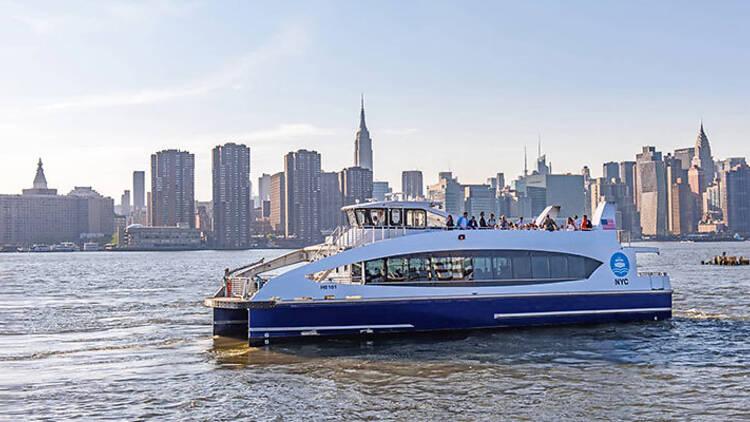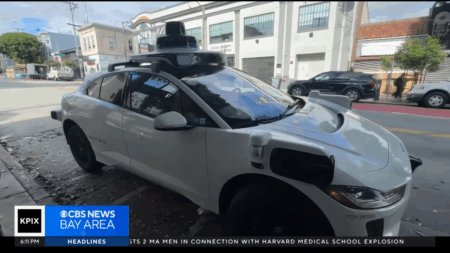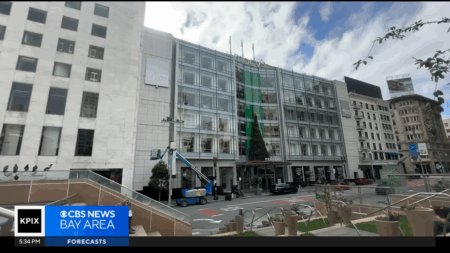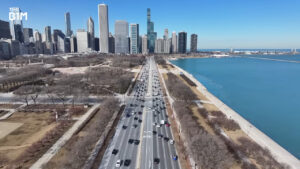NYC Ferry Expansion: Introducing a Direct Brooklyn-Staten Island Route
Bridging Boroughs: A New Ferry Route to Connect Brooklyn and Staten Island
New York City is considering a transformative addition to its ferry network—a direct route linking Brooklyn with Staten Island. This initiative seeks to fill a long-standing transit void by offering a seamless waterborne connection between these two boroughs, which have historically lacked direct ferry service. By providing an alternative to crowded subways and buses, the new route promises to reduce commute times and enhance waterfront accessibility for residents and visitors alike.
Beyond daily commuting, this route is expected to invigorate tourism by showcasing scenic views of the harbor, encouraging more people to explore the city’s diverse waterfronts.
Highlights of the Proposed Brooklyn-Staten Island Ferry Route
- Improved transit access for southern Brooklyn neighborhoods such as Red Hook and Sunset Park
- Direct docking at Staten Island’s Stapleton terminal, facilitating easy transfers to the Staten Island Railway
- Alleviation of pressure on overburdened subway lines and bus routes
- Stimulus for waterfront economic revitalization, including new retail and dining options
| Route Segment | Approximate Duration | Projected Daily Ridership |
|---|---|---|
| Brooklyn Navy Yard to Staten Island (Stapleton) | Approximately 40 minutes | 5,000 to 7,000 passengers |
| Current East River Ferry Route | 20 to 25 minutes | 15,000 to 20,000 passengers |
Economic and Social Advantages of the Brooklyn-Staten Island Ferry Link
Establishing a ferry connection between Brooklyn and Staten Island is poised to generate substantial economic uplift and strengthen community bonds. By facilitating easier access to job centers, shopping districts, and cultural venues across boroughs, the route can significantly reduce commute durations, enabling residents to engage more actively in cross-borough activities.
This enhanced connectivity is expected to catalyze waterfront development, attracting new businesses such as cafes, boutiques, and recreational facilities, thereby creating jobs and boosting local economies. Moreover, the ferry service can foster social cohesion by linking diverse neighborhoods, promoting cultural exchange, and encouraging civic participation.
Environmental benefits are also anticipated, as increased ferry usage may lead to fewer cars on the road, contributing to improved air quality and reduced greenhouse gas emissions.
Summary of Anticipated Benefits
- Economic Growth: Potential 10-15% rise in revenues for local businesses
- Transit Efficiency: Commuters could save 20-30 minutes per trip
- Community Engagement: More frequent cultural and social events across boroughs
- Environmental Impact: Up to 5% reduction in vehicular emissions in affected areas
- Real Estate: Increased property values and new waterfront developments
| Benefit Category | Expected Impact |
|---|---|
| Economic Development | Boost in local business activity and job creation |
| Transit Accessibility | Shorter travel times and improved connectivity |
| Community Integration | Enhanced cultural exchange and social cohesion |
| Environmental Sustainability | Lower emissions and reduced traffic congestion |
Addressing Challenges in Launching the Brooklyn-Staten Island Ferry Service
While the proposed ferry route offers numerous advantages, several challenges must be navigated to ensure its success. Integrating the new service with existing transit infrastructure requires careful planning to synchronize schedules and minimize transfer times. Upgrading ferry terminals to handle increased passenger volumes and meet accessibility standards will demand significant investment.
Environmental considerations are paramount, as the route traverses waters vulnerable to seasonal storms and tidal fluctuations, which could disrupt service reliability. Additionally, community concerns about noise, safety, and waterfront impacts necessitate thorough stakeholder engagement and transparent communication.
Key Implementation Considerations
- Terminal Upgrades: Modernizing docks for safety, accessibility, and capacity
- Environmental Assessments: Evaluating impacts on marine habitats and air quality
- Financial Planning: Balancing capital expenditures with sustainable operating budgets
- Ridership Projections: Accurate forecasting to optimize vessel deployment and schedules
- Interagency Coordination: Aligning with MTA and local transit authorities for seamless connections
Strategic Recommendations and Next Steps for Stakeholders
Successful realization of the Brooklyn-Staten Island ferry route hinges on collaborative efforts among city agencies, transit operators, community groups, and environmental experts. Prioritizing open dialogue with residents will help address concerns related to fare pricing, environmental stewardship, and equitable access.
Comprehensive data gathering on travel patterns and peak usage times will inform efficient scheduling and resource allocation. Early involvement of maritime safety specialists and urban planners can mitigate operational risks and ensure smooth integration with the broader transit network.
Planned Actions and Timeline
- Conduct detailed feasibility studies to assess technical and financial viability
- Engage in ongoing community outreach to incorporate public feedback
- Perform environmental impact analyses focusing on waterway ecosystems
- Explore diverse funding sources, including public-private partnerships and grants
- Implement pilot ferry services during off-peak hours to gather operational data
| Task | Responsible Parties | Estimated Duration |
|---|---|---|
| Feasibility Study | NYC Department of Transportation & Ferry Operators | 3 to 6 months |
| Community Engagement | Local Councils & Nonprofits | Ongoing |
| Pilot Program Launch | Ferry Service Providers | 6 to 12 months |
| Funding Acquisition | City and State Agencies | Immediate and continuous |
Conclusion: A Promising Step Toward Enhanced NYC Transit
The proposed ferry route connecting Brooklyn and Staten Island stands to reshape New York City’s transportation framework by offering a vital new transit option. If realized, it could significantly ease congestion on traditional transit lines, foster economic growth, and promote environmental sustainability. As planning advances, ongoing community involvement and meticulous evaluation will be critical to ensuring the project’s success and long-term viability. Updates will follow as the city progresses toward potentially launching this innovative expansion of the NYC Ferry system.













